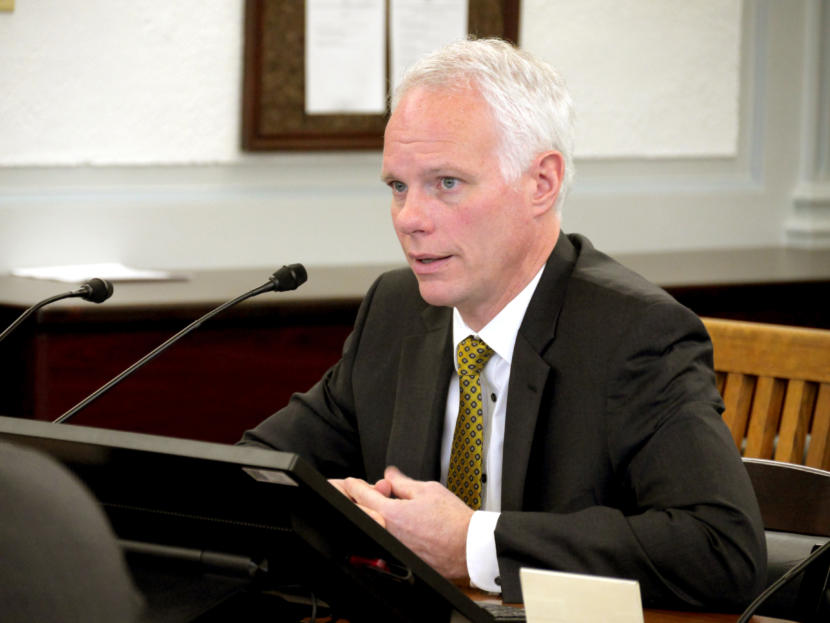
As Alaska lawmakers decide what to do about the budget, one group that’s keeping an eye on the outcome are the agencies that rate the state’s ability to pay off its debts. As the budget situation worsened in recent years, the agencies downgraded the state’s credit rating 10 times between 2016 and 2020.
But the rating agencies see improvement in Alaska’s outlook.
The past year has seen oil prices stabilize. And investment growth has added to the Alaska Permanent Fund.
Edward Hampton says both are good news for the state budget. He’s analyzed Alaska’s finances since Sarah Palin was the governor. And he worked on a Moody’s Investors Service report in April that revised the outlook for Alaska’s credit rating from negative to stable.
“Alaska is a state that is adjusting to a new approach to the oil industry,” he said. “And a big part of that is being able to rely on the permanent fund’s earnings in a systematic way.”
It isn’t just the oil and investment markets that have helped. Hampton said the three years of the state sticking to a plan to draw from permanent fund earnings are also a reason for the improved outlook.
“For at least the time being, we are accepting that the state is adhering to its structured draw approach and is not going to try to deviate from that in a dramatic way that would deplete the permanent fund earnings reserve account,” he said. “Obviously there is risk if the state goes in the direction of paying higher dividends.”
This week, legislators are debating a budget that would pay a $1,100 dividend, less than half the amount proposed by Gov. Mike Dunleavy.
Despite the improved outlook, Moody’s currently gives only two states worse credit ratings than Alaska: Illinois and New Jersey.
And Hampton said Moody’s would likely need to see lawmakers make it clear that they won’t draw more than planned from permanent fund earnings before the state’s credit rating is upgraded.
In May, S&P Global Ratings also changed Alaska’s credit outlook from negative to stable this spring. Like Moody’s, S&P analysts cite improvements in oil prices and permanent fund earnings.
State debt manager Deven Mitchell said there are practical benefits for the state and its residents when the ratings agencies see an improved outlookIn his job, Mitchell tries to protect the state’s credit rating.
Mitchell said the revised outlooks allowed Alaska municipalities to refinance loans at a lower rate — and the City of Sand Point and the Southeast Alaska Power Agency took out new loans at less expense — through the municipal bond bank.
“And so if that was only, you know, a tenth of a percent, it still makes a big difference when you’re talking about a couple hundred millions dollars of bonds being issued,” he said.
But Mitchell noted that the ratings agencies continue to point out risks related to uncertainty over how much will be drawn from permanent fund earnings.
A third agency — Fitch Ratings — didn’t revise its negative outlook for Alaska this spring. Fitch analysts expressed concern that the permanent fund’s earnings reserve could be drawn down if investments decline and the state draws more than planned.
A provision of the proposed budget compromise being debated could increase that concern. The budget would transfer $4 billion from the earnings reserve — which isn’t protected by legislative spending — to the fund’s constitutionally protected principal.
Mitchell said he understands why lawmakers are proposing the transfer.
“That, from a long-term perspective, is in my view a smart thing to do, a prudent thing to do,” he said. “But from a strictly ‘how are you going to pay your bills?’ perspective, you know, cash is king. You want to have liquidity in order to pay your bills.”
But Mitchell said that while there are divisions over the budget, lawmakers have been less dire in their predictions than they were when the agencies repeatedly downgraded Alaska’s credit rating. And he said that’s helped improve the credit outlook.
“I think that’s made a big difference: It’s just the tone of the discussion in the state of Alaska, even though some of the same issues remain,” he said.
Legislative budget negotiators are hoping to pass the budget before Thursday, when state workers are scheduled to receive layoff notices.


